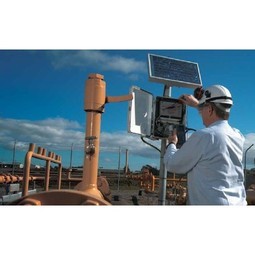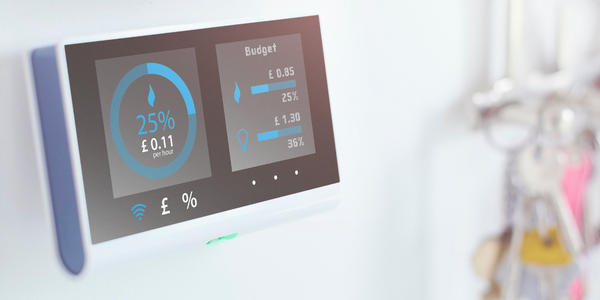技术
- 平台即服务 (PaaS) - 应用开发平台
- 传感器 - 全球定位系统
适用行业
- 城市与自治市
- 公用事业
用例
- 库存管理
- 人员跟踪与监控
关于客户
SOS 儿童村是一个全球性非政府组织,自 1949 年以来一直致力于在世界上一些最具挑战性的地区保护儿童并保护他们的权利。该组织每年为 SOS 儿童村及其周边地区数十万弱势儿童及其家人提供护理、教育和医疗服务。该组织在 137 个国家开展业务,其中许多国家位于世界上最不稳定和最脆弱的地区。该组织在奥地利设有常设全球应急响应 (GER) 团队,负责监控新出现的风险并提供适当的支持和资源。
挑战
SOS 儿童村是一个全球性组织,致力于在世界上一些最具挑战性的地区保护儿童并保护他们的权利,在确保其位于 137 个国家的站点的安全方面面临着重大挑战。其中许多地点位于世界上最不稳定和最脆弱的地区,经常受到自然和人为灾害的影响。该组织在奥地利设有常设全球应急响应 (GER) 团队,其职责是监测从恶劣天气事件到政治动荡等新出现的风险,并提供适当的支持和资源,以确保其工作人员和受益人的安全。地面。为了实现其目标,GER 团队需要获取及时、准确且详细的信息。
解决方案
2016 年,SOS 儿童村推出了新的在线平台 Everstream Analytics,以支持其风险管理和应对工作。该平台提供了一个地理模型,涵盖 SOS 儿童村综合网络中的每个项目站点,为 GER 团队提供每个位置以及关键基础设施位置的图形视图。该模型还充当风险相关信息的中央存储库,包括历史自然灾害数据和组织当地和区域工作人员提供的报告。 Everstream 风险评估结合了多个公共和专有来源的数据,提供超过 35 个不同风险类别的概述,帮助该非政府组织进行应急计划和战略风险管理工作。该平台的风险监控服务跟踪传统媒体和社交媒体以及多个其他数据源,并向国家和地区办事处以及 GER 团队发出相关地点发生的事件警报。
运营影响
数量效益

Case Study missing?
Start adding your own!
Register with your work email and create a new case study profile for your business.
相关案例.

Case Study
Turning A Stadium Into A Smart Building
Honeywell created what it called the “intelligent system” for the National Stadium in Beijing, China, turning the venue for the opening and closing events at the 2008 Summer Olympics into a “smart building.” Designed by highly controversial artist Ai Weiwei, the “Bird’s Nest” remains one of the most impressive feats of stadium architecture in the world. The 250,000 square meter structure housed more than 100,000 athletes and spectators at a time. To accommodate such capacity, China turned to Honeywell’s EBI Integrated Building Management System to create an integrated “intelligent system” for improved building security, safety and energy efficiency.

Case Study
IoT Solutions for Smart City | Internet of Things Case Study
There were several challenges faced: It is challenging to build an appliance that can withstand a wide range of voltage fluctuations from as low at 90v to as high as 320v. Since the device would be installed in remote locations, its resilience was of paramount importance. The device would have to deal with poor network coverage and have the ability to store and re-transmit data if networks were not available, which is often the case in rural India. The device could store up to 30 days of data.

Case Study
Automation of the Oguz-Gabala-Baku water pipeline, Azerbaijan
The Oguz-Gabala-Baku water pipeline project dates back to plans from the 1970’s. Baku’s growth was historically driven by the booming oil industry and required the import of drinking water from outside of the city. Before the construction of the pipeline, some 60 percent of the city’s households received water for only a few hours daily. After completion of the project, 75 percent of the two million Baku residents are now served around the clock with potable water, based on World Health Organization (WHO) standards. The 262-kilometer pipeline requires no pumping station, but uses the altitude differences between the Caucasian mountains and the capital to supply 432,000 m³/d to the Ceyranbatan water reservoir. To the people of Baku, the pipeline is “the most important project not only in 2010, but of the last 20 years.”

Case Study
GPRS Mobile Network for Smart Metering
Around the world, the electricity supply industry is turning to ‘smart’ meters to lower costs, reduce emissions and improve the management of customer supplies. Smart meters collect detailed consumption information and using this feedback consumers can better understand their energy usage which in turn enables them to modify their consumption to save money and help to cut carbon emissions. A smart meter can be defined in many ways, but generally includes an element of two-way communication between the household meter and the utility provider to efficiently collect detailed energy usage data. Some implementations include consumer feedback beyond the energy bill to include online web data, SMS text messages or an information display in consumers’ premises. Providing a cost-effective, reliable communications mechanism is one of the most challenging aspects of a smart meter implementation. In New Zealand, the utilities have embraced smart metering and designed cost effective ways for it to be implemented. The New Zealand government has encouraged such a move to smart metering by ensuring the energy legislation is consistent with the delivery of benefits to the consumer while allowing innovation in this area. On the ground, AMS is a leader in the deployment of smart metering and associated services. Several of New Zealand’s energy retailers were looking for smart metering services for their residential and small business customers which will eventually account for over 500,000 meters when the multi-year national deployment program is concluded. To respond to these requirements, AMS needed to put together a solution that included data communications between each meter and the central data collection point and the solution proposed by Vodafone satisfied that requirement.
.png)
Case Study
Smart Street Light Network (Copenhagen)
Key stakeholders are taking a comprehensive approach to rethinking smart city innovation. City leaders have collaborated through partnerships involving government, research institutions and solution providers. The Copenhagen Solutions Lab is one of the leading organizations at the forefront of this movement. By bringing together manufacturers with municipal buyers, the Copenhagen Solutions Lab has catalyzed the development and deployment of next-generation smart city innovations. Copenhagen is leveraging this unique approach to accelerate the implementation of smart city solutions. One of the primary focus areas is LED street lighting.

Case Study
NB-IoT connected smart meters to improve gas metering in Shenzhen
Shenzhen Gas has a large fleet of existing gas meters, which are installed in a variety of hard to reach locations, such as indoors and underground, meaning that existing communications networks have struggled to maintain connectivity with all meters. The meter success rate is low, data transmissions are so far unstable and power consumption is too high. Against this background, Shenzhen Gas, China Telecom, Huawei, and Goldcard have jointly trialed NB-IoT gas meters to try and solve some of the challenges that the industry faces with today’s smart gas meters.







